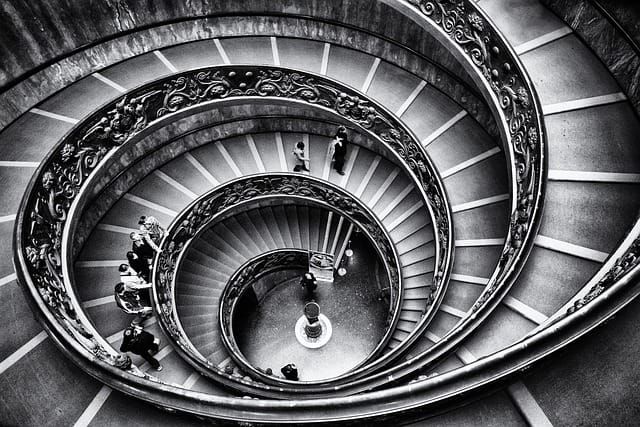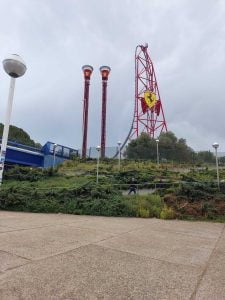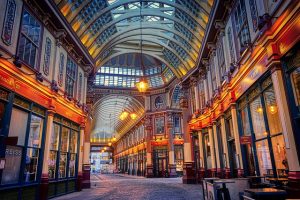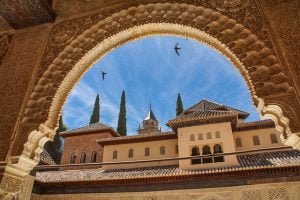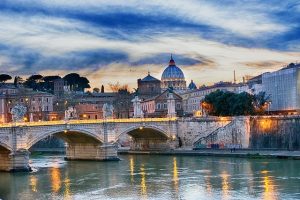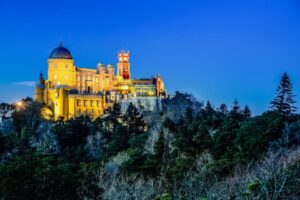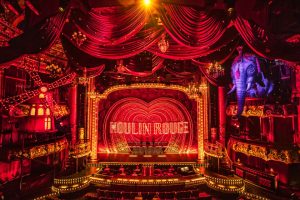Rome, the 'eternal city', is not just a place but an experience. The historical depth, architectural splendor and cultural wealth of Rome, the capital of Italy. A unique facet of Rome, from its iconic landmarks and rich history, to its vibrant local life and delicious cuisine.
1. 'Rome was not built in one day': the historical depth
Rome, the eternal city, is steeped in a rich and fascinating history spanning two and a half thousand years. From its humble beginnings as a small settlement along the Tiber River, Rome grew to become the capital of one of the most powerful empires in history. This historical depth is evident in every corner of the city, making it a paradise for history buffs and explorers.
- The Rise of Ancient Rome:
The history of Rome begins with its legendary foundation by Romulus and Remus in 753 BC. From there, Rome grew steadily, establishing itself as a republic in 509 BC. The expansion of the Republic resulted in the creation of a vast empire, encompassing a large part of Europe, North Africa and the Middle East. The Roman Republic flourished for centuries before transitioning to the Roman Empire under Emperor Augustus in 27 BC. - The glory of the Roman Empire:
At its height, the Roman Empire was a beacon of civilization, known for its engineering marvels, cultural achievements and military prowess. The empire built magnificent monuments, such as the Colosseum and the Pantheon, which still stand as a testament to the splendor of Rome. Roman law, governance and infrastructure laid the foundation for modern society, and left an indelible mark on Western civilization. - The Fall and Renaissance of Rome:
Despite its power, the Roman Empire faced internal strife, invasions, and ultimately, its decline. The fall of the Western Roman Empire in 476 AD marked a pivotal moment in history. However, Rome's influence did not wane completely. In the following centuries, the city experienced a cultural and artistic rebirth, known as the Renaissance. During this period, extraordinary artists appeared, such as Michelangelo and Raphael, who left their mark on Rome's architecture and artwork.
2. The architectural splendor: what makes Rome iconic?
Rome is known for its architectural splendor, which is a major factor in its iconic status. The city boasts an impressive variety of architectural styles, from ancient Roman ruins to Renaissance palaces and Baroque churches. The combination of these diverse architectural elements creates a visually striking and unique urban landscape.
- 1. Ancient Roman ruins:
It is impossible to talk about the architectural splendor of Rome without mentioning its ancient Roman ruins. The Colosseum, a huge amphitheater that once hosted gladiatorial contests and other shows, stands as a testament to the engineering prowess of the ancient Romans. Once the center of political and social life in ancient Rome, the Roman Forum displays ruins of temples, basilicas and government buildings, offering a glimpse of the city's past glory. - 2. Renaissance palaces:
During the Renaissance, Rome saw a resurgence of artistic and architectural achievements. Palaces such as Palazzo Ferranza and Palazzo Barberini display the splendor and opulence of this period. These palaces feature exquisite frescoes, intricate stonework and beautifully landscaped gardens, reflecting the wealth and power of the noble families that once inhabited them. - 3. Baroque churches:
Rome is also known for its magnificent baroque churches, scattered throughout the city. The most famous of them is St. Peter's Basilica, located in the Vatican City. Its great dome, designed by Michelangelo, dominates the skyline of Rome. The interior of the basilica is decorated with amazing marble works, intricate mosaics and masterpieces by renowned artists such as Bernini and Raphael. Other notable Baroque churches in Rome include the Church of Sant'Ivo alla Sapienza and the Church of Santa Maria della Vittoria, both known for their elaborate facades and interiors.
3. The Colosseum: a testament to the glory of Rome?
The Colosseum stands as a magnificent monument that embodies the glory and power of ancient Rome. Built over 2,000 years ago, this massive amphitheater was a symbol of the empire's grandeur and a testament to its engineering prowess. The Colosseum was not only a venue for gladiatorial contests but also hosted various forms of entertainment, including mock sea battles and animal hunts.
The sheer size and architectural complexity of the Colosseum is awe-inspiring. With a seating capacity of up to 50,000 spectators, it was the largest amphitheater ever built during the Roman Empire. Its elliptical shape, towering arches and complex system of corridors and tunnels demonstrate the meticulous planning and engineering skills of the ancient Romans. The exterior facade, once adorned with statues and ornate decorations, showcased the empire's wealth and artistic sophistication.
Today, the Colosseum stands as a testament to the enduring legacy of ancient Rome. Despite being partially ruined, it remains an iconic symbol of the city and a UNESCO World Heritage Site. Visitors from around the world flock to Rome to marvel at its splendor and learn about its fascinating history.
Entering the Colosseum is like stepping back in time. Exploring the underground rooms where gladiators prepared for battle, walking the corridors where the spectators once cheered, and standing in the center of the arena itself evoke a sense of awe and wonder. The Colosseum serves as a powerful reminder of the gladiatorial games and the brutal reality of ancient Roman society.
4. Vatican City: a city within a city?
Located in the heart of Rome, Vatican City is a unique and intriguing destination that stands as an independent city-state and the spiritual center of the Catholic Church. This tiny sovereign state covers just over 100 acres and is the smallest country in the world. Despite its small size, the Vatican City has enormous religious, cultural and historical significance.
- 1. Spiritual shelter:
Vatican City, the home of the Pope and the headquarters of the Catholic Church, serves as a spiritual refuge for millions of Catholics around the world. The iconic St. Peter's Basilica, with its stunning Renaissance architecture and awe-inspiring works of art such as Michelangelo's Pietà, attracts pilgrims and art lovers alike. The Vatican Museums, which house an extensive collection of priceless art, including the breathtaking Sistine Chapel, further enhance the spiritual and cultural experience. - 2. Rich cultural heritage:
Vatican City is a treasure trove of artistic masterpieces and historical artifacts. The Vatican Museums boast a wide collection of art spanning centuries, from ancient Egyptian relics to Renaissance masterpieces. Visitors can immerse themselves in the beauty of the Vatican galleries, admiring the works of famous artists such as Raphael, Caravaggio and Botticelli. The Vatican Library, one of the oldest and most important libraries in the world, preserves a huge collection of manuscripts, rare books and historical documents, attracting researchers from all over the world. - 3. An oasis of peace:
Among the bustling streets of Rome, the Vatican City offers a calm and peaceful atmosphere. Covering more than half of the city-state's area, the Vatican Gardens provide a lush and peaceful retreat. Walking through the beautifully landscaped gardens, adorned with fountains, sculptures and vibrant vegetation, visitors can find solace and reflection. The gardens also offer breathtaking views of St. Peter's Basilica and the surrounding cityscape.
5. La Dolce Vita: What is Rome without its food and wine?
Rome is not only a city rich in history and culture but also a gastronomic paradise that excites the taste buds of visitors from around the world. The culinary scene in Rome is a celebration of traditional Italian cuisine, offering a diverse range of flavors and dishes that reflect the city's vibrant food culture. From classic pasta dishes like carbonara and amatriciana to mouth-watering pizzas and gelato, Rome has something to satisfy every palate.
Indulging in the culinary delights of Rome is an essential part of experiencing the city's unique charm. The local trattorias, Austrians and pizzerias offer an authentic taste of Italian cuisine, serving homemade dishes made with fresh, locally sourced ingredients. Traditional Roman specialties such as supplì (fried rice balls), cacchio a pepe (pasta with pecorino cheese and black pepper), and saltimbocca alla romana (veal with prosciutto and sage) are must-try dishes that showcase the region's culinary prowess.
But it's not just the savory dishes that make Rome a paradise for food lovers. The city is also known for its excellent wine. The Roman wine scene is diverse, with a variety of local vineyards producing exceptional wines. From crisp white wines like Frascati to full-bodied reds like Chianti and Montepulciano, there's a wine to go perfectly with every meal. A tour of Rome's wine bars and enotecas is a delightful adventure for wine lovers, offering the opportunity to taste and savor the flavors of the region.
No visit to Rome is complete without indulging in the city's famous street food. From the irresistible aroma of freshly baked pizza bianca to the mouthwatering magic of fried artichokes (carciofi alla giudia), Rome's street food scene is a culinary experience in itself. The local markets, such as Campo de' Fiori and Testaccio, are bustling with vendors selling a variety of delicious street food treats that will leave you wanting more.
6. The Roman piazzas: more than just city squares?
The piazzas of Rome are not just ordinary city squares; They are vibrant centers of activity and social life. Entering a Roman piazza is like entering the heart of the city, where locals and visitors gather to soak up the atmosphere and enjoy the beauty of their surroundings. These piazzas serve as meeting places, meeting points and stages for the theater of daily life in Rome.
One of the most iconic piazzas in Rome is Piazza Navona. With its stunning baroque architecture, Bernini's famous Fountain of the Four Rivers and bustling outdoor cafes, it's a real spectacle for the senses. Tourists and locals alike flock to this piazza to admire the art, watch street performers and simply enjoy the lively atmosphere.
Another notable piazza is Piazza di Spagna, home of the famous Spanish Steps. This picturesque square is a popular meeting place and a favorite place for people-watching. The elegant steps, decorated with colorful flowers, provide the perfect setting for locals and visitors to relax and enjoy the beauty of the city.
Piazza del Popolo, located at the northern entrance to Rome, is another must-see square. Its grandeur and symmetry make it a favorite among architects and photographers. From the towering Egyptian obelisk to the twin churches of Santa Maria in Montesanto and Santa Maria dei Miracoli, this piazza is a testament to Rome's rich history and architectural splendor.
Rome's piazzas are not just static spaces; They come alive with events and festivals throughout the year. From Christmas markets to summer concerts and art exhibitions, these squares are transformed into lively places that showcase the city's cultural vibrancy.
In addition to their cultural significance, the piazzas also offer a glimpse into the daily life of the Romans. Locals gather in these squares to socialize, play chess, or simply enjoy a leisurely stroll. In these piazzas you can really immerse yourself in the authentic spirit of Rome, witness the ups and downs of its inhabitants and feel the pulse of the city.
7. When in Rome: Understanding local life
When visiting Rome, it's not just about seeing the famous landmarks and indulging in Italian cuisine; It is also important to understand and delve into the local way of life. To truly experience the essence of Rome, here are some key aspects to keep in mind:
- 1. Embrace the art of the aperitivo:
Aperitivo is a beloved tradition in Rome, where locals gather in bars and cafes in the early evening for drinks and appetizers before dinner. This is the time to relax, socialize and enjoy the company of friends and family. Therefore, be sure to join the ritual of sipping refreshing cocktails of a spritz or a glass of wine, and enjoy a delicious bite such as bruschetta and olives. - 2. Explore the neighborhoods:
Rome is a city of distinct neighborhoods, each with its own unique charm and character. For a taste of local life, venture beyond the tourist hotspots and explore areas such as Trastevere, Testaccio and Monti. These neighborhoods offer a more authentic experience, with narrow cobbled streets, local markets and picturesque trattorias where you can taste traditional Roman dishes. - 3. Slow down and enjoy the Pasjata:
The "Passagiata" is a beloved Italian tradition of a leisurely stroll in the early evening. This is the time for the Romans to go out and enjoy the lively streets of the city, see and be seen. Join the locals as they wander along popular boulevards like Via del Corso or along the Tiber River, taking in the sights, indulging in gelato and engaging in lively conversation.
8. The Roman Pantheon: A marvel of ancient engineering?
The Roman Pantheon is a testament to the amazing engineering skills of the ancient Romans. Located in the heart of Rome, this architectural marvel has captivated visitors for centuries with its unparalleled grandeur and design.
- 1. A kippa like no other:
The most striking feature of the Pantheon is its magnificent dome, which remains the largest unreinforced concrete dome in the world. The design of the dome is a masterpiece of engineering, with a perfect hemispherical shape that creates a sense of awe and wonder when you stand under it. The dome's construction techniques, using layers of different materials and decreasing density towards the top, allowed for its impressive size while maintaining stability. - 2. The oculus:
Heavenly connection:
In the center of the Pantheon's dome is the famous Oculus, a circular opening that bathes the interior in natural light. This architectural feature not only adds to the aesthetic appeal of the building but also serves a practical purpose. The oculus serves as a source of ventilation, allowing hot air to escape and cool air to circulate, creating a comfortable environment inside the building. - 3. Accuracy in proportions:
The design of the Pantheon shows the Romans' mastery of proportion and symmetry. The circular shape of the building, together with its carefully calculated dimensions, create a harmonious balance that is pleasing to the eye. The height of the dome is equal to its diameter, which creates a visually pleasing sense of balance. The accuracy of the Pantheon's proportions is a testament to the Romans' meticulous attention to detail and their understanding of architectural aesthetics.
9. The museums of Rome: a treasure trove of art and history
Rome is a city that boasts an impressive collection of museums, making it a paradise for art and history buffs. From antiques to Renaissance masterpieces, these museums offer a captivating journey through time.
The Vatican Museums, located within the Vatican City, are a must visit for any art lover. This vast complex contains an extensive collection of art and historical artifacts, including such well-known works as Michelangelo's Sistine Chapel ceiling and Raphael's frescoes. Walking through the corridors of the Vatican Museums is like stepping into a treasure trove of artistic brilliance, where each room contains a new surprise waiting to be discovered.
Another prominent museum in Rome is the Capitoline Museums, which are the oldest public museums in the world. Located on the Capitoline Hill, these museums display an extraordinary collection of ancient Roman sculptures, including iconic pieces such as the Capitoline Wolf and the colossal statue of the Emperor Constantine. The museums also contain an impressive array of antiquities, coins and paintings, providing visitors with a comprehensive understanding of Rome's rich history.
For those interested in exploring Renaissance art, the Borghese Gallery is a must-visit. Located in the former Villa Borghese Pinciana, this museum boasts an extraordinary collection of sculptures and paintings by renowned artists such as Bernini, Caravaggio and Raphael. The intimate setting of the gallery allows visitors to appreciate the intricate details and emotional depth of each masterpiece up close.
In addition to these well-known museums, Rome is full of small, hidden gems that offer unique insights into the city's artistic and historical heritage. Museums such as Galleria Doria Pampilage and Palazzo Barberini are lesser known but no less impressive, with their exquisite collections of paintings, sculptures and decorative arts.
10. Roman nightlife: what happens after the sun goes down?
As the sun sets in Rome, the city comes alive with a vibrant and energetic nightlife that is sure to captivate visitors. From cozy wine bars to lively nightclubs, there's something for everyone to enjoy after dark.
One of the most popular nightlife areas in Rome is Trastevere. This picturesque neighborhood is known for its narrow cobbled streets with bars and restaurants. Here locals and tourists gather to enjoy an aperitivo, indulge in delicious Italian cuisine and soak up the lively atmosphere. Trastevere really comes alive at night, with music spilling out into the streets and people socializing late into the evening.
For those looking for a more luxurious experience, the area around the Spanish Steps is the place to be. Here you will find elegant cocktail bars and rooftop lounges offering stunning views of the city. Sipping a classic negroni while admiring the city lights is a quintessential Roman nightlife experience.
If you're in the mood to dance, head to Testaccio or San Lorenzo, where you'll find a variety of clubs and music venues. These neighborhoods are known for their vibrant nightlife scenes, with DJs spinning everything from techno to hip-hop. The clubs in Rome often stay open until the early hours of the morning, ensuring that the party never stops.
In addition to the bars and clubs, Rome also offers a unique cultural nightlife experience. The city is home to many theaters, opera houses and live music venues where you can enjoy performances ranging from classical music to contemporary theater. Attending a concert at the Teatro dell'Opera di Roma or seeing a live jazz show at one of the city's jazz clubs is a wonderful way to immerse yourself in Rome's cultural scene.
Finally, Rome is a place where the past and the present coexist. The city's rich history, amazing architecture and vibrant culture make it a must-see destination for every traveler in the world. Once you experience Rome, you will understand why it is considered the 'Eternal City'.

